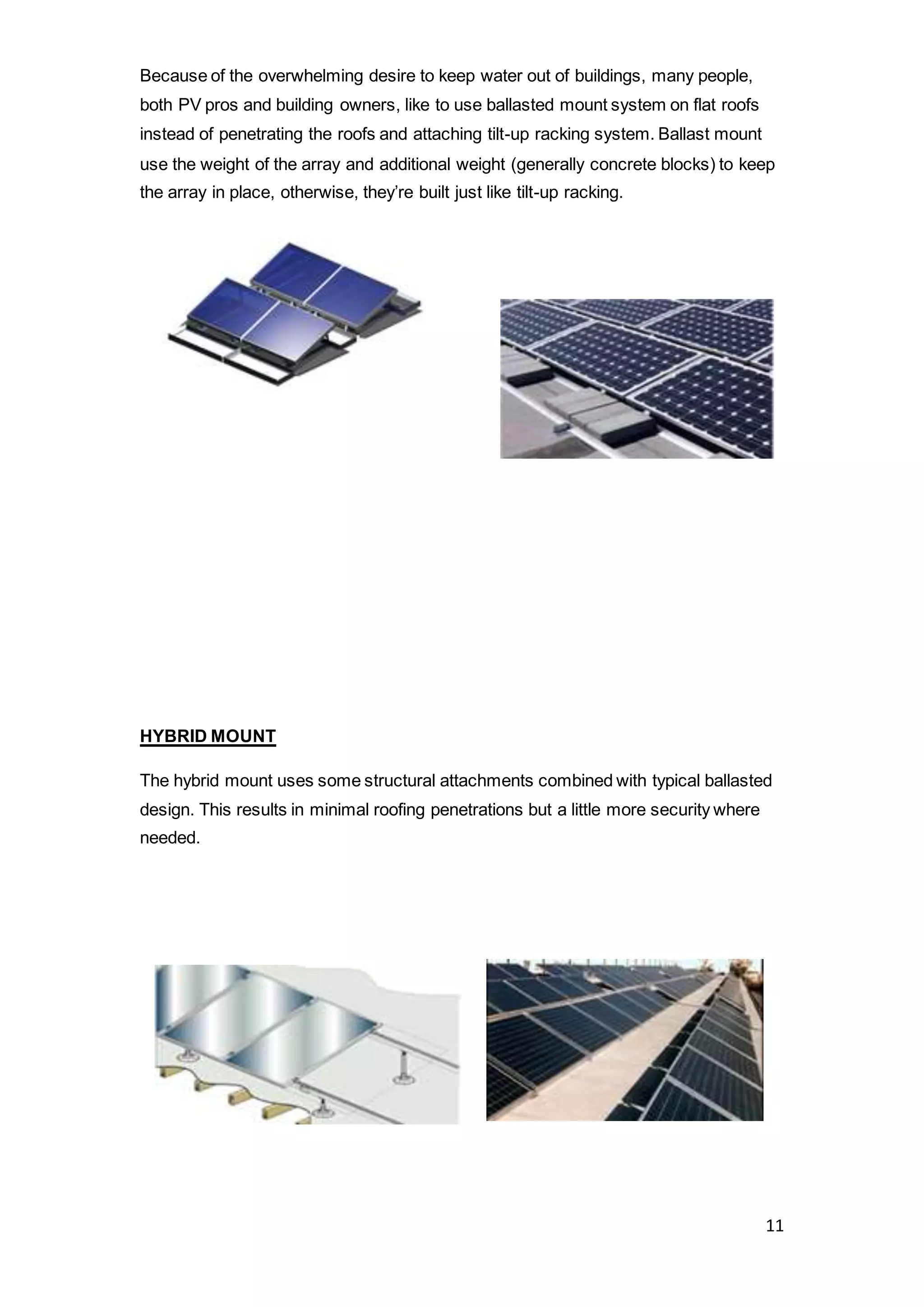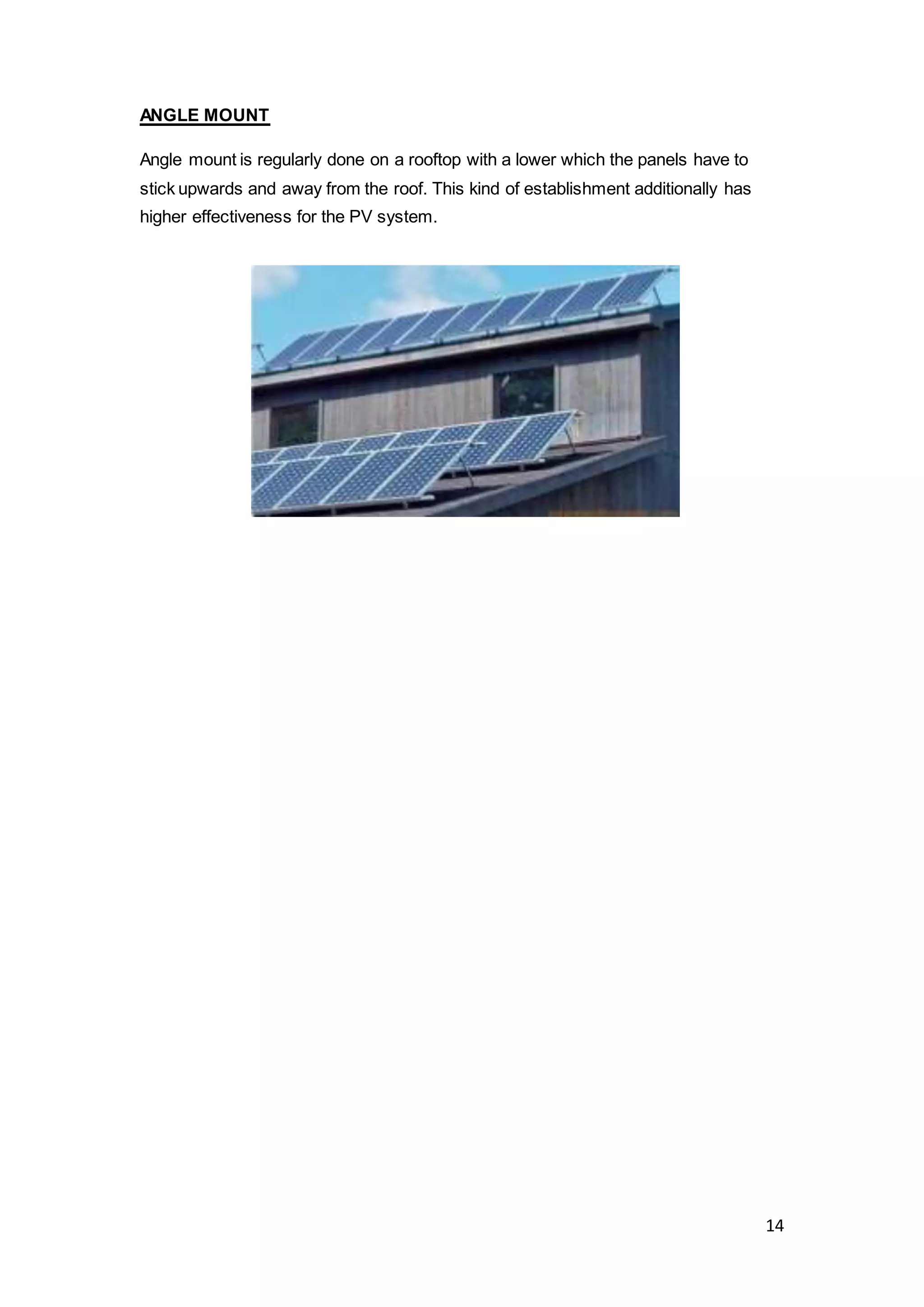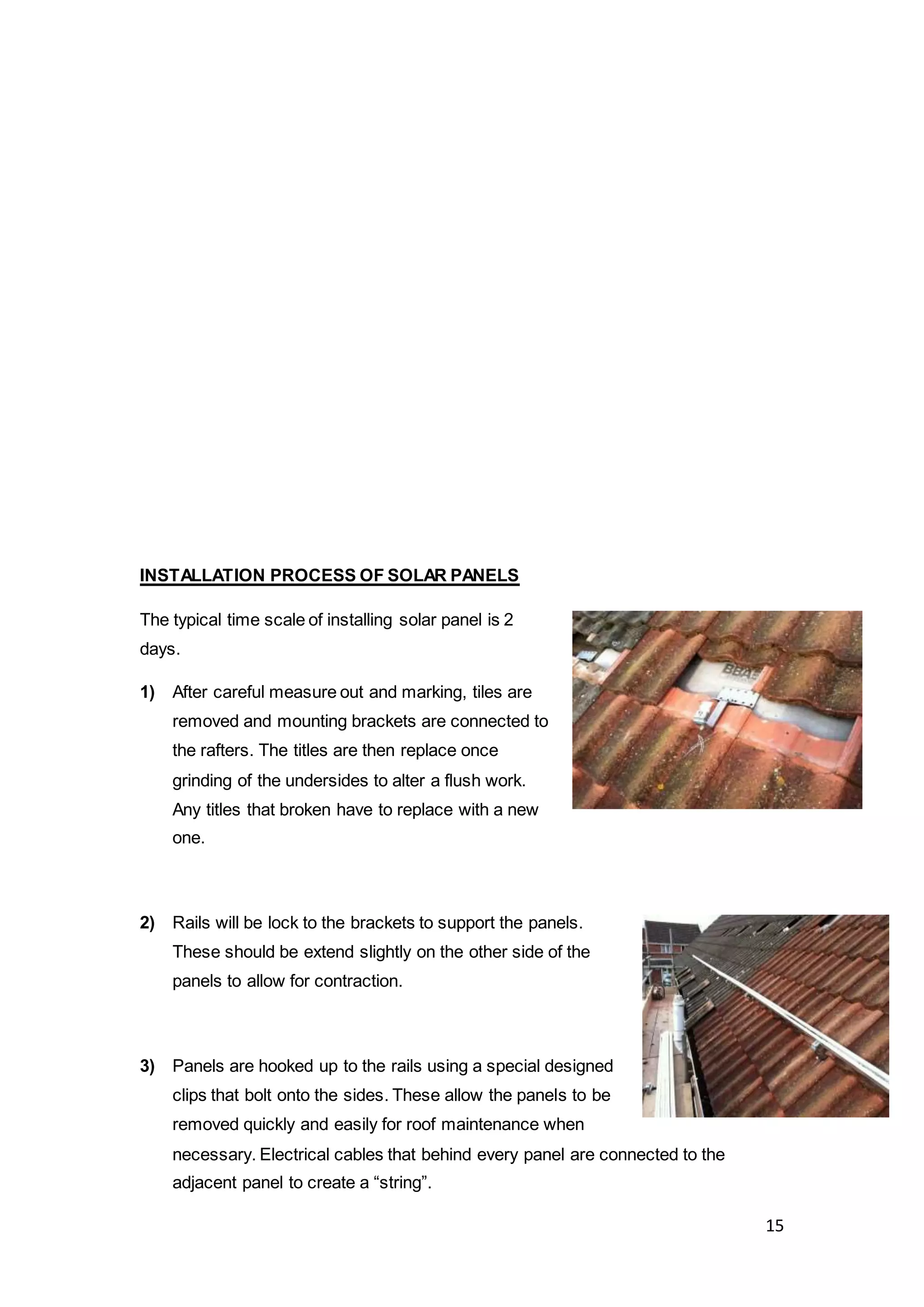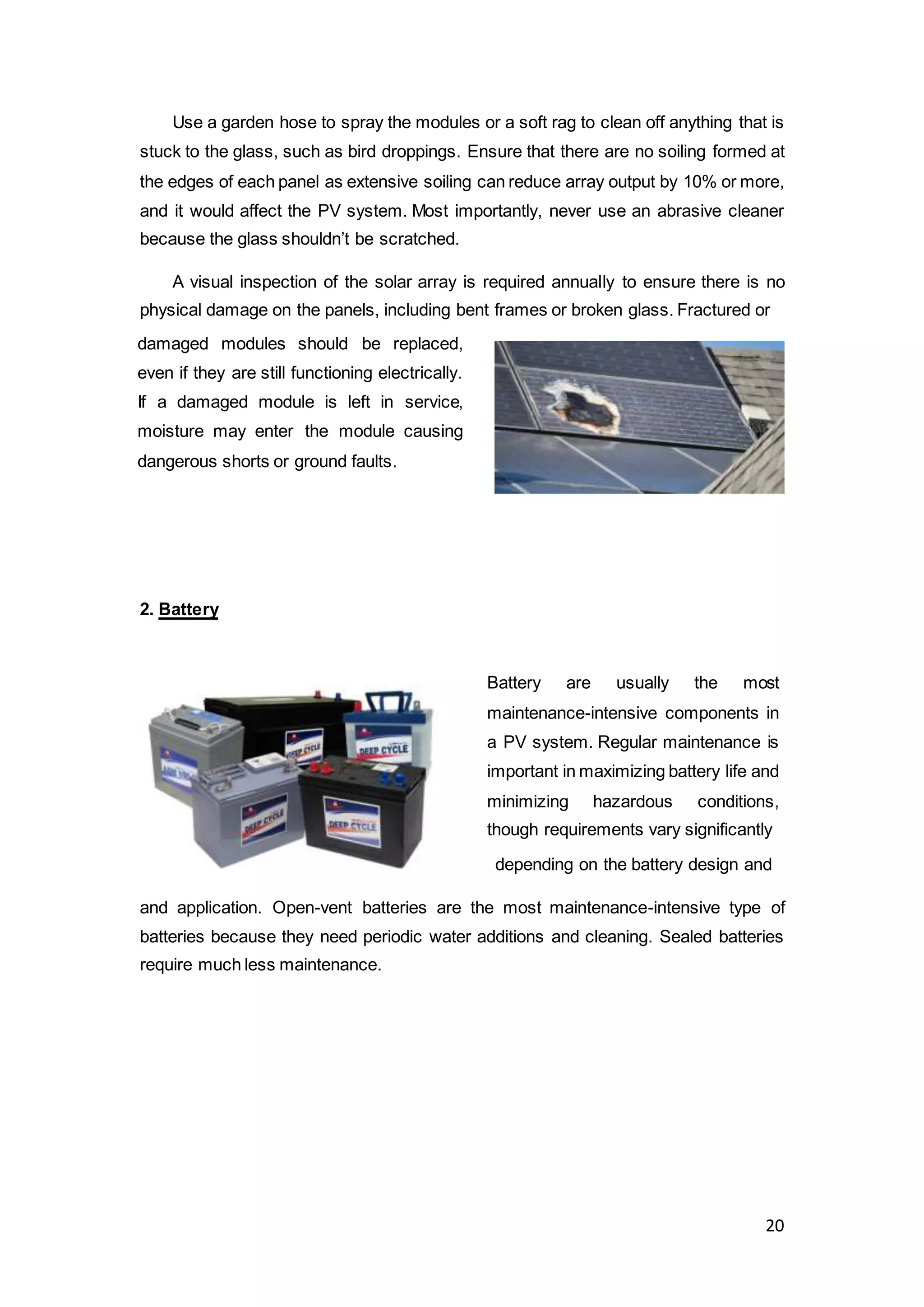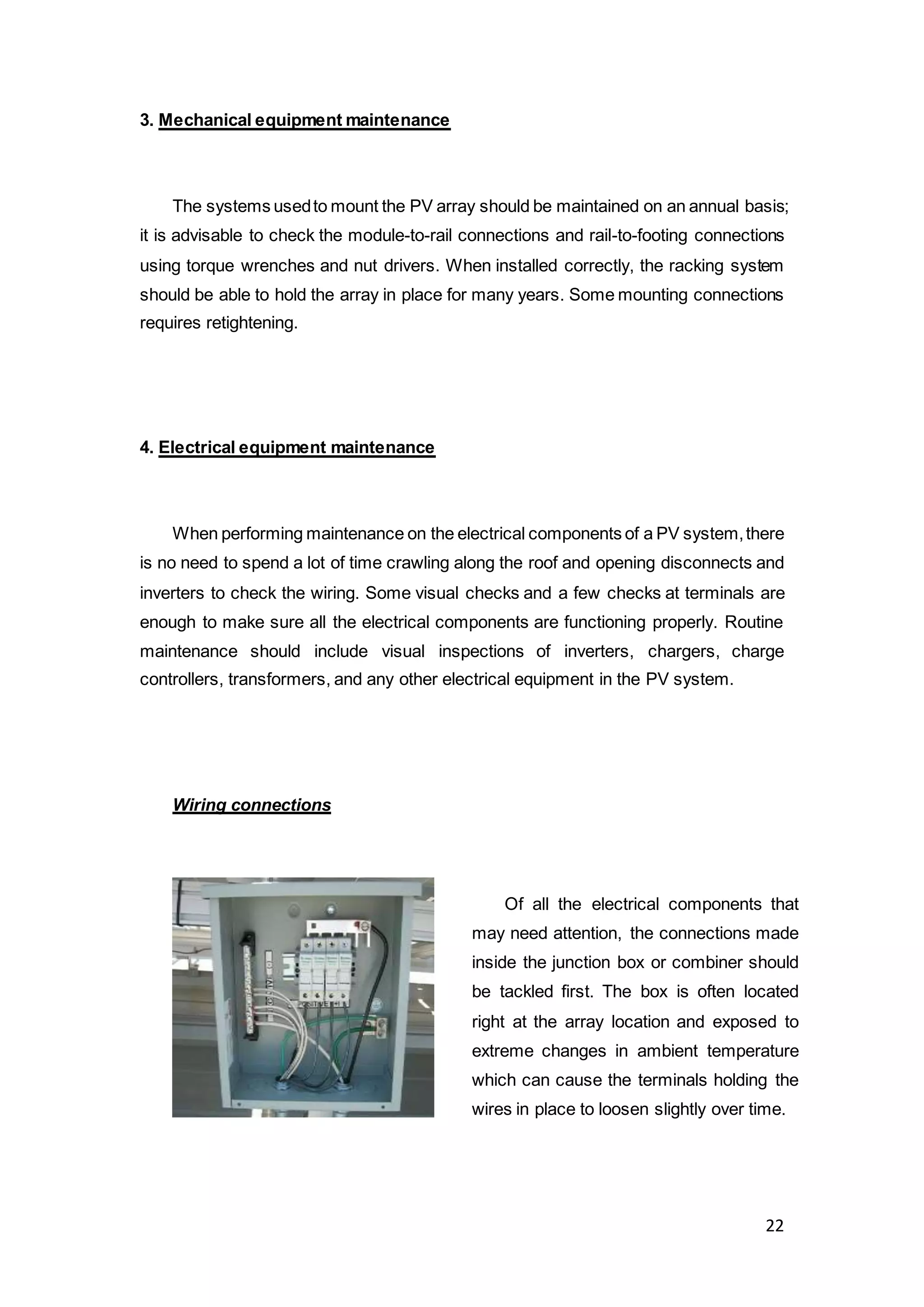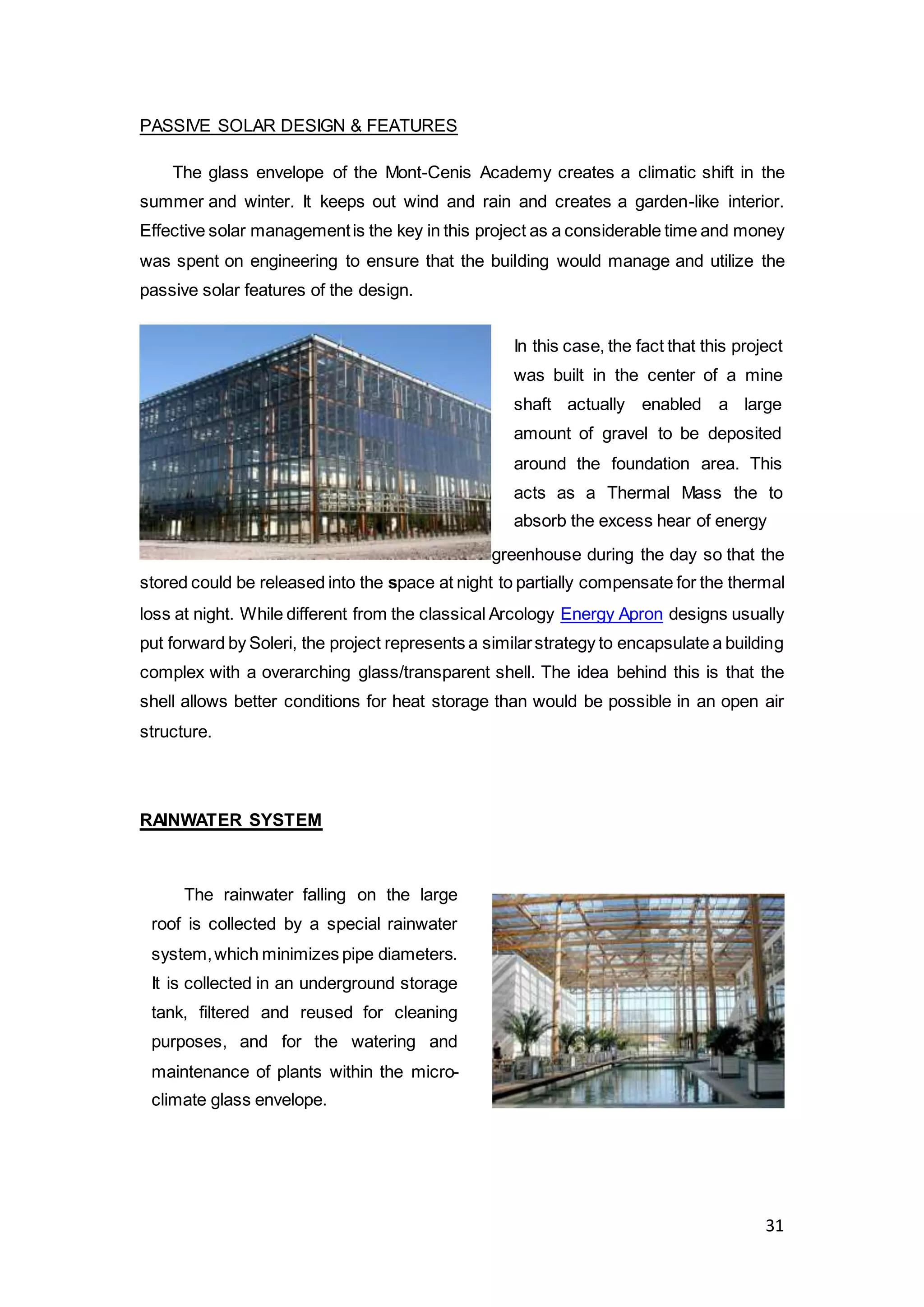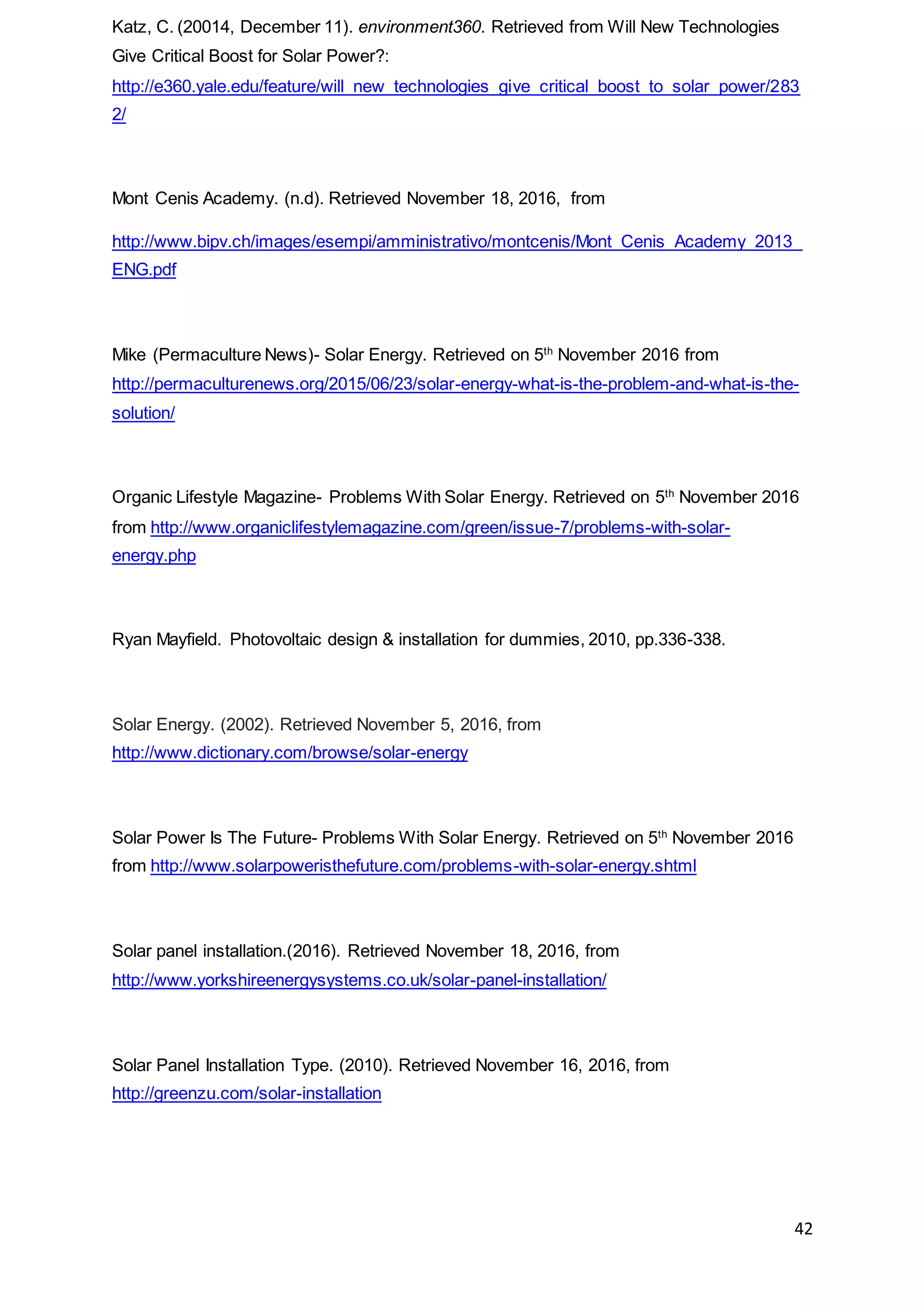The document discusses the installation process of solar energy systems in buildings, including considerations like the number and type of solar panels needed based on electricity consumption. It explains that thin-film panels are better for shaded sites and cheaper than crystalline panels, and the installation involves mounting the panels, wiring an inverter to convert DC to AC current, and connecting to the utility grid.
![SCHOOL OF ARCHITECTURE. BUILDING.
DESIGN
Bachelor of Quantity Surveying
BUILDING SERVICES 1 [BLD 60403]
Name : TAN JIA SAN 0322406
GILLIAN CHONG 0323941
ELISSA CHANG 0326909
CHIN KE NI 0324021
LETTITIA LOIS HIEW 0323908
LECTURER: LIM TZE SHAWN
SUBMISSION DATE : 23rd
November 2016](https://image.slidesharecdn.com/bsreportfinal-161205155716/75/Bs-report-final-1-2048.jpg)









